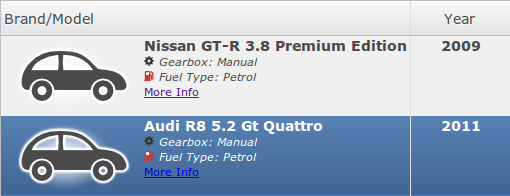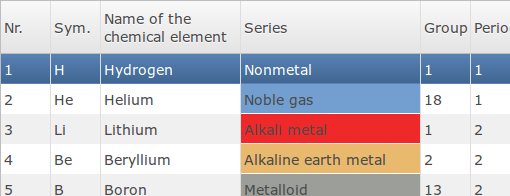Here's a list of the most noteworthy things in the RAP 1.5 M6 milestone build which is available for download since March 23, 2012.
For a selection of widgets, simple HTML markup is now accepted in the setText()
method. Currently supported widgets are TableItem, TreeItem,
Label and CLabel.

To enable markup support for a widget, use the new constant
RWT.MARKUP_ENABLED in the setData() method.
This must be done directly after creating the widget and cannot be changed later.
Here's a code example:
Table table = new Table( parent, SWT.BORDER );
table.setData( RWT.MARKUP_ENABLED, Boolean.TRUE );
TableItem item = new TableItem( table, SWT.NONE );
item.setText( "Some <em>text</em> with <strong>markup<strong>" );
The markup will be validated on the server. Currently, the following HTML elements area allowed:
<em>,
<strong>,
<big>,
<small>,
<sup>,
<sub>,
<del>,
<ins>, etc.
<br/>
<img src="images/example.png" width="16" height="16" />, width and
height are obligatory
<a href="http://eclipse.org">Eclipse</a>.
To open the linked page in a new tab, you can use the target
attribute.
See the JavaDoc for RWT.MARKUP_ENABLED for further information.
You can try it out in our updated demo on the
Rich Labels page.
Check out the
Table with markup
page as well.
When you use markup in a Table or a Tree, you may want to set a fixed item height manually.
To do so, you can use the new setData() constant
RWT.CUSTOM_ITEM_HEIGHT:
table.setData( RWT.CUSTOM_ITEM_HEIGHT, Integer.valueOf( 62 ) )A custom item height must be set directly after creating the widget and cannot be changed later.

TableColum and TreeColumn now respect line breaks.
No special setting is required. When the text of a header contains a linebreak character
(\n), the line break will be rendered and the column height will be adjusted
automatically.
It's now possible to exclude a given number of leftmost table columns from horizontal scrolling. This is very useful for tables that have a lot of columns, with the first column(s) containing some kind of heading or key value (e.g. a person's name) that should always be visible.

For more details, see the JavaDoc on RWT.FIXED_COLUMNS.
The FileUpload widget is no longer bound to the theming of the Button theming
but can be styled separately.
All CSS properties that are supported for Button are now also supported for the
new FileUpload CSS element.
Instead of adding entrypoints by name, and selecting them with the startup
parameter in the URL, they can (and should) now be registered directly with URL path.
The org.eclipse.rap.ui.entrypoint extension point supports a new attribute
path. This attribute should now be used instead of the old
parameter attribute. With the entrypoint below, the application will be
available at the URL http://HOSTNAME/CONTEXT/example
<extension
point="org.eclipse.rap.ui.entrypoint">
<entrypoint
id="org.example.exampleEntryPoint"
class="org.example.ExampleEntrypoint"
path="/example" />
</extension>
The brandings extension point is still supported, but will be replaced with a
simpler concept in the future (see below).
Also when using the new ApplicationConfigurator API to create RAP applications
programmatically, entrypoints are now registered by path.
config.addEntryPoint( "/example", ExampleEntryPoint.class, properties );
Brandings in RAP are limited to adjustments needed for the web client.
With the possiblity to support multiple clients for RAP, this concept is not
flexible enough anymore.
As a replacement, we now support simple properties maps for entry points.
Every client implementation can provide their properties.
The new class WebClient contains the properties for the default web client.
Here's an example how to use it:
Map<String, String> properties = new HashMap<String, String>();
properties.put( WebClient.THEME_ID, "com.example.mytheme" );
properties.put( WebClient.FAVICON, "images/favicon.png" );
config.addEntryPoint( "/example", entryPointFactory, properties );
The new protocol has been optimized for size and readablity by representing operations as JSON arrays instead of objects. So for example, instead of this message snippet:
{ "action": "destroy", "target": "w23" },
{ "action": "set", "target": "w24", "properties": { "visibility": false } }
the server now only answers:
[ "destroy", "w23" ],
[ "set", "w24", { "visibility": false } ]
This cuts the size of the responses by around 20% – 25% and we think it also makes the messages more concise and clear.
This list shows all bugs that have been fixed for this milestone build.
The above features are just the ones that are new since the last milestone build. Summaries for earlier builds: